Industry
IBCS is Not Limited to the The Air and Missile Defence [INTERVIEW]
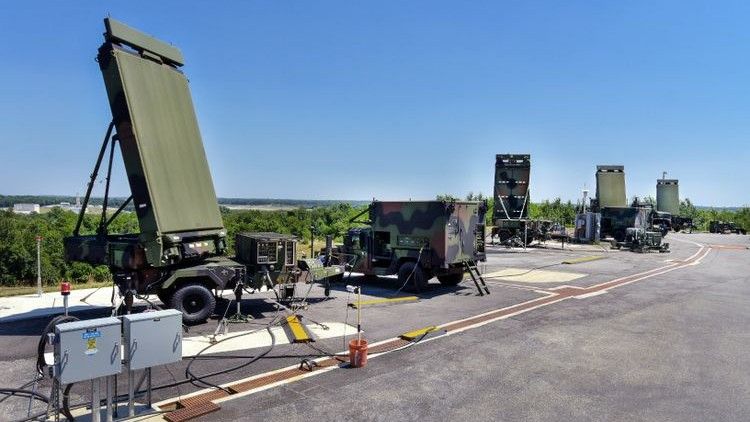
We view industrial participation by Polish industry as a critical component to successfully delivering the IBCS component of WISLA to Poland - as Tony Housh, Director – Poland, Central Europe and Baltic, Northrop Grumman Mission Systems said in an interview with Defence24.pl. The interview does also mention the potential use of IBCS beyond the Wisła project, including in the areas beyond the air defence.
Jędrzej Graf, Jakub Palowski: The agreement for the first phase of WISLA project has been signed recently. What are the most important steps that Northrop Grumman is poised to take now, relating to the WISLA project (both phases)?
Tony Housh, Director – Poland, Central Europe and Baltic, Northrop Grumman Mission Systems: We are working with the U.S. government so that a contract can be awarded to Northrop Grumman to start work on the WISLA Phase 1 IBCS efforts. We are also negotiating Offset Execution Agreements with Polish industry so we can start working the technology transfer with Polish industry as soon as the contract is awarded to us by the U.S. government. At the same time, we are working with the Polish MoND Armaments Inspectorate and U.S. government to help define the requirements and scope for the WISLA Phase 2 LOA.
What are the largest challenges related to the current state of the project here in Poland, especially related to the Offset Execution Agreements that you are planning to sign within the WISLA project?
Offset agreements are complex because they are a combination of legal agreements, government-approved levels of transfer of the technology, and business-to-business agreements. There are a lot of moving parts to make offset happen. Those discussions and deliberations are ongoing right now. It was a significant indicator of progress the two governments held the signing ceremony in March, which was a great milestone, and now we are moving forward with concrete discussions with offset in Phase 1.
More generally, we are moving forward with important discussions that continue to take place with the Polish MoD, and with the Polish industry, with the U.S. government and with U.S. industry. There are ongoing meetings and working groups in Huntsville, Alabama, and other locations to make sure we are all on the same page with regard to the technical requirements. It is good that those discussions have gotten underway quite quickly after the signing ceremony so we can move forward together.
Can you reveal any schedule of those Offset Execution Agreements with the Polish industry?
That is what is being discussed literally right now, to set the timelines and frameworks. Before details of offset can be finalized, the first activity to be performed is to settle the definitions and all the frameworks.
So, part of our effort is getting the process accurately defined and making sure everyone understands the requirements on both sides. Then, as we move further into technical discussions, we will have detailed, agreed-to schedules to be executed over the next several years. It is vital that everyone is precise and understands what needs to be done, who needs to do it and when it needs to be done in order to reach our common goals. That is what is being discussed right now.
Czytaj też: Northrop Grumman: We see Poland as the world leader in the acquisition of the IBCS and IAMD [Defence24 TV]
Have already you identified any specific Polish industrial capabilities that would have significant potential to cooperate with Northrop Grumman, not only in Wisla, but also in other projects?
Given IBCS is a command-and-control system, cooperative areas for Polish industry encompass areas including communications, computers, network components, and software engineering. It is generally understood that cooperative opportunities with Polish industry will be broader and expanded in Phase 2 of WISLA. We view industrial participation by Polish industry as a critical component to successfully delivering the IBCS component of WISLA to Poland. We look forward to providing an update on our numerous discussions with Polish industry.
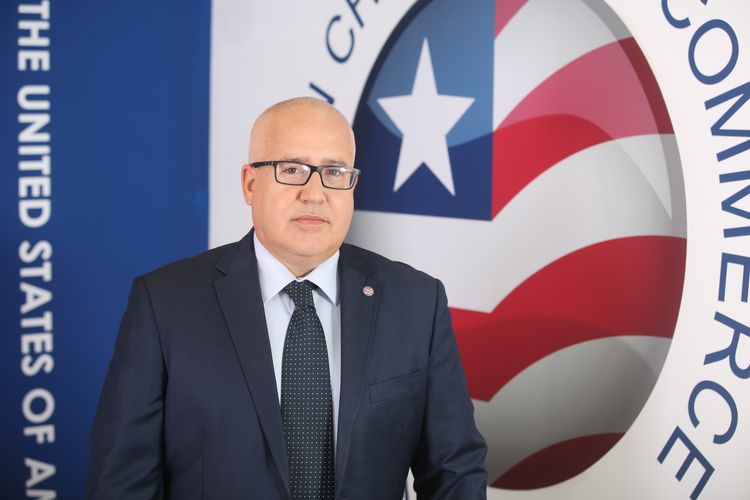
IBCS and IAMD are the priorities of the US Army modernization, the air and missile defence is within the “Big Six” of priorities. To what extent does the Wisla and IBCS purchase support the overall Northrop Grumman effort to develop and field the system to the US Army?
The selection and acquisition of IBCS by Poland recognizes that just as IBCS forms the centerpiece of the U.S. Army’s air and missile defence modernisation strategy, it can perform that same role for Poland as a part of the WISLA programme and potentially others. It also provides affirmation that the technology which underpins IBCS is both increasingly mature and revolutionary. As the first U.S. ally to acquire IBCS, Poland’s acquisition will likely increase interest in IBCS internationally, which will be good for the program and will provide operational benefits to allies and coalition partners across the globe also choosing to acquire IBCS.
Do you think that the Polish purchase could help accelerate fielding the IBCS to the United States?
We do not envision the Polish purchase to impact our IBCS development and fielding efforts to the U.S. Army. We are working according to the development and test schedule defined by the U.S. government and Department of the Army. The program is on track and we are confident we will be able to complete the program on schedule and meet the Army’s operational requirements.
The current schedule predicts fielding the system (Initial Operational Capability) in 2022 in the US.
Information regarding the scope and schedule for IBCS development and fielding are best provided by the U.S. government. The IBCS program is on track and Northrop Grumman is confident we will be able to deliver to the U.S. Army’s operational requirements.
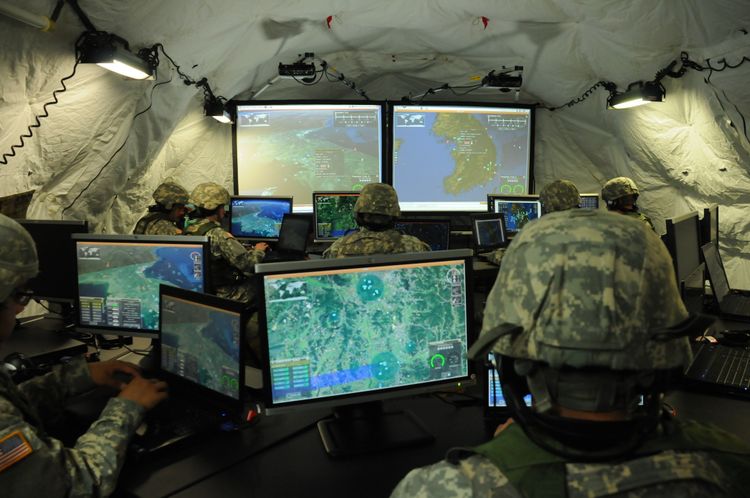
Sometimes we still hear in the public discussion in the US that instead of developing the entire new IAMD architecture, based on IBCS, incremental upgrades of existing systems should be the solution, with less costs and less risk. How would you comment on that?
This is a debate that often takes place in the defence industry and frequently introduced by competitors with aging systems that lack the latest technology and game-changing capabilities being introduced with programs like IBCS. The U.S. Army decided several years ago that investing in network-enabled, Modular Open Systems Approach (MOSA) software and hardware represented the future and the most cost-effective path for integrating air and missile defence systems. Northrop Grumman is extremely proud of the work we perform in developing IBCS for the U.S. Army and we commend Poland and the Ministry of National Defence for recognising that IBCS can serve as the central component for modernizing its Air and Missile Defence forces.
Fielding the IBCS will provide a qualitative leap for the Air and Missile Defence force, and that game-changing capability cannot be replaced by upgrading legacy systems.
What are the key points of the industrial cooperation between Northrop Grumman and the Polish industry in the first phase of Wisła?
Our focus for industrial cooperation between Polish industry and Northrop Grumman is toward training and technical assistance to Polish industry to develop the interface with IBCS and also to provide training to enable Polish industry to maintain and sustain IBCS once it is delivered to the Polish Armed Forces.
The second phase of Wisła is to integrate the Polish sensors with IBCS, and more firing units are planned to be purchased. What will be the key differences between the first and the second phase, from the industrial cooperation point of view?
Industrial cooperation will be wider and deeper in Phase 2, bringing business, technology and know-how benefits to the Polish defence sector. It is important to remember that Phase 2 discussions are now underway, so this work will begin before the Phase 1 components are in the field. There will be software development and more work on Polish sensors, interface components as well as the physical elements of the systems – command centres for current and future operations, communication relays and network components.
Some of the discussion in Poland is focused on comparing the Polish air defence system purchase to the Patriot purchases by Sweden and Romania. How would you comment on that?
Through the acquisition of IBCS, Poland is acquiring a much more sophisticated and technologically advanced integrated air and missile defence system that will enable employment of multiple sensors and effectors on a network. Poland’s WISLA integrated air and missile defence system will be capable of employing short range air defence systems being considered for NAREW and will provide any sensor, best shooter engagements. IBCS makes existing legacy sensors and weapons relevant for the current situations by creating a truly integrated system to optimise the elements for the enterprise. IBCS also facilitates affordable and effective integration of future capabilities for a next-generation system to address evolving threats. We would encourage our global allies and partner countries that are acquiring air and missile defences, to consider IBCS for acquisition to serve as the centerpiece for their AMD modernisation and leverage IBCS to be extensible to integrating capabilities across multiple domains.
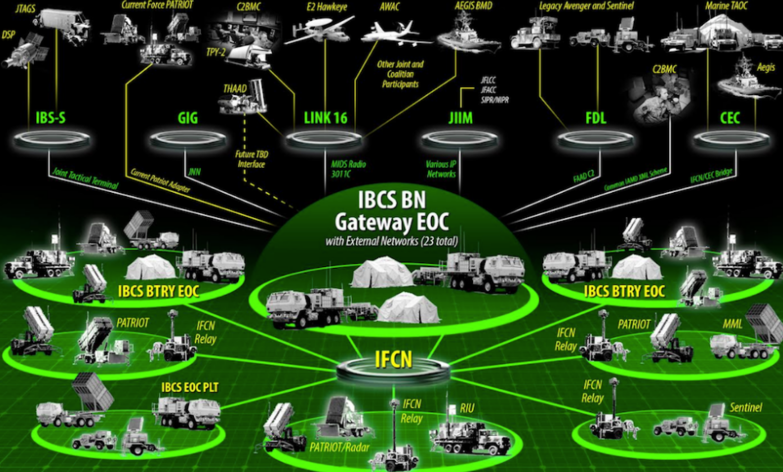
Does integration of IBCS with NAREW and Polish sensors mean that the short range air defence radars, the Polish sensors will be able to provide fire control for the Polish IBCS-integrated Patriot system, through IBCS?
Should the Polish Ministry of Defence decide to acquire IBCS for NAREW, there is the capability to integrate NAREW sensors onto the IBCS network to create a single integrated air picture and provide an integrated battle management capability to perform engagements against short and medium range air defence threats.
Using the IBCS to create the common air picture from all available sensors and to choose the best shooter is the most effective and optimal way for the engagement. From the technical point of view, incorporating Polish sensors into the system is possible by virtue of the IBCS modular and open systems design.
To what extent does the first phase of WISLA project contribute to the establishing of the layered, integrated air defence system in Poland?
The strength of the WISLA program is to use IBCS as the backbone, which establishes a strong and capable foundation consistent with how the US Army is transforming integrated air and missile defence. By starting with the IBCS backbone, the most affordable, flexible and effective layered and integrated air defence system can be created. The WISLA programme will deliver sensors and effectors to the Polish armed forces and see the fielding of cutting-edge IBCS capabilities at the same time as delivered to the U.S. Army. This first part of the programme will initiate industrial cooperation with Polish industry, allow a robust training and interoperability process for Polish armed forces and help shape the development and decisions of the true, layered integrated air and missile defence system for Poland and the northeast flank of NATO. It firmly establishes Poland as a leader in air and missile defence in Europe.
What is the significance of the Polish purchase to the Polish-US relationships, and the Polish-US military cooperation?
We congratulate Poland for completing the agreement for WISLA Phase 1, it is an important milestone in our defence and technology cooperation. With IBCS as the backbone of WISLA, Poland will transform its integrated air and missile defence capabilities in a manner consistent with how the US Army is revolutionising integrated air and missile defence. Through IBCS, Poland will also ensure seamless integration of its air defence forces in allied operations.
It clearly signals that Poland is committed to building a military capacity that not only protects Poland, but will play a major role in maintaining peace and security in northeast Europe and the Baltic region for the NATO alliance.
How do you assess the importance of modern Integrated Air Defence Systems like IBCS-Patriot, for the NATO collective defence?
It is very important and IBCS will enable Poland to contribute substantially to NATO collective defence. A modern system like the IBCS-enabled integrated air and missile defence system demonstrates a commitment to a next-generation system, which is an important part of the collective defence, now and in the future. With the IBCS-enabled WISLA, Poland can take advantage of the investment made on legacy defence systems, create the most cutting edge integrated air and missile defence capability possible and possess the flexibility for continuing to evolve the system for defeating threats that may arise.
Control of NATO airspace is an issue of security and sovereignty. A more robust IAMD structure in Europe will heighten the level of security of member states and allow them to work together to deter or defeat any threat that may arise. Poland’s IBCS IAMD system will significantly contribute to this effort.
Do you see an increased interest in the integrated air defence systems, like IBCS among NATO countries?
We are receiving significant interest in acquiring advanced, next-generation integrated air and missile defence among NATO countries and other partner countries around the world. IBCS transforms integrated air and missile defence capabilities by establishing a strong and flexible foundation that allows sensors and effectors to be integrated as ‘commodities.’ This makes legacy systems more capable and relevant for today and enables the integrated air and missile defence system to affordably evolve with new technologies and to address emerging threats.
There is increased interest on IAMD among NATO countries as a number of them move to meet their defence investment commitments and to modernise their armed forces for evolving threats. IBCS is well placed to serve a number of NATO countries in the future as they define their specific defence needs and develop IAMD strategies to protect not only the territory of a given country, but contribute to the collective defence of the alliance.
Poland’s acquisition of IBCS has certainly been noted not only across Europe, but in countries around the world. It is a clear example of an important decision made in order to ensure national security in the world of today, and most importantly, tomorrow. It will also ensure the maximum interoperability with U.S. and NATO forces, and that is a strong signal. That increases the interest of other countries, to learn how that sort of system could work, either with legacy systems they already have, or with new systems that can be purchased.
Could you mention any specific countries interested in the purchase of the IBCS?
It would not be appropriate at this stage to comment on on-going discussions, but we can convey there is interest from countries in the Asia Pacific, the Middle East, and Europe.
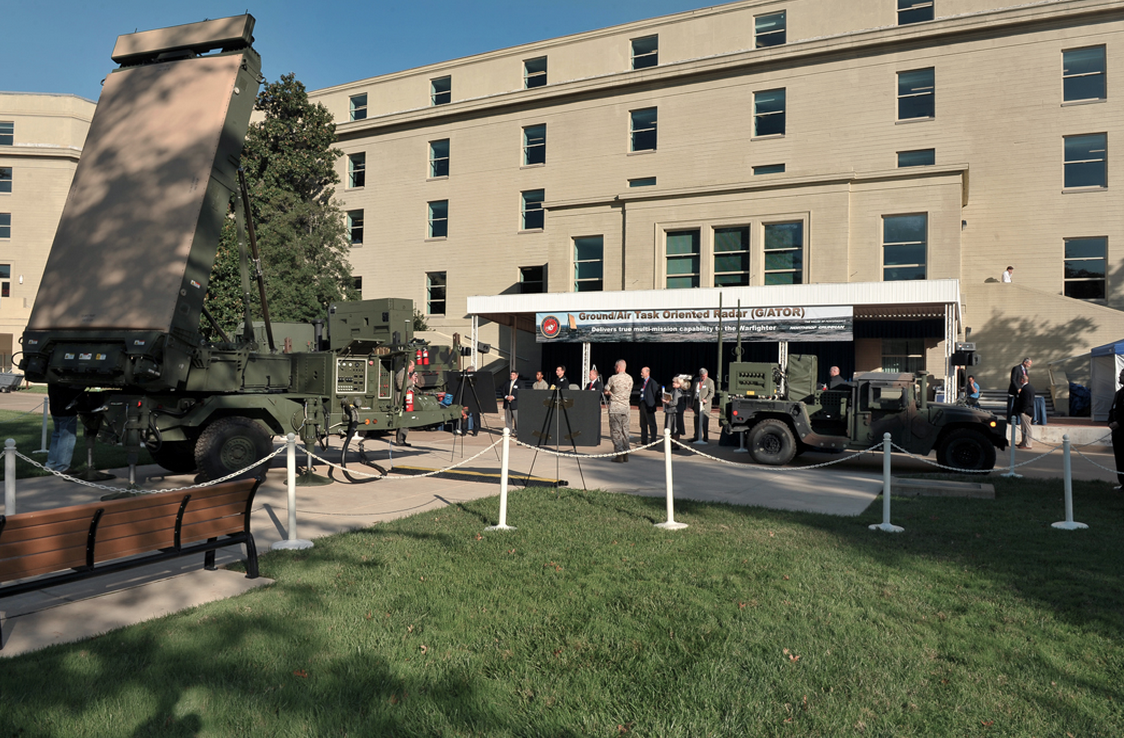
In the second phase of Wisla, Poland wants to purchase a 360-degree radar, a similar one to that purchased by US within LTAMDS project. What are the key features of the G/ATOR project within LTAMDS?
G/ATOR, the AN/TPS-80 Ground/Air Task Oriented Radar, is a highly mobile, multi-mission, S-Band radar system and has already been demonstrated to interface with IBCS. Like IBCS, it is a scalable, open architecture system and designed for great flexibility. It utilises Northrop Grumman’s AESA (Active Electronically Scanned Array) radar technology and can perform multiple missions on a ‘plug-and-fight’ basis.
G/ATOR is in production and GaN systems are being delivered to the U.S. Marine Corps. It is replacing five legacy systems. G/ATOR also proves that state-of-the-art sensor systems can be light, compact and highly mobile.
G/ATOR provides multi-mission capability in a single system – short range air defence, air surveillance, counter-fire target acquisition and air traffic services with 360 degree field of vision.
In Poland we had recently various discussions regarding the Phase 2 of Wisła, and the technology transfer is one of the key issues. Is Northrop Grumman ready to transfer the AESA GaN technology of G/ATOR to Poland?
Both the sale and the transfer of any technology is subject to the U.S. government and the State Department approval. A transfer of advanced technology is possible only when a government-to-government agreement is reached, and ultimately the U.S. government determines the degree of technology transfer to our partner countries, regardless if this is Northrop Grumman, or other companies. Northrop Grumman stands ready to support as directed by the U.S. government. G/ATOR has received export approval through the U.S. government for Poland.
Just recently, Congress has indicated that the LTAMDS radar should be operationally ready by the end of 2023. That deadline has been already put in the NDAA 2018, and looking at the House Armed Services Committee NDAA 2019 draft it is likely that it will be maintained in the NDAA 2019. Is Northrop Grumman ready to field the 360 degree radars by that time?
Northrop Grumman is currently participating in the LTAMDS programme and is able to support the Lower Tier Program Office’s published schedule through leveraging mature ground-based technology.
Poland signaled an interest in using IBCS for other purposes, including the Narew project, as well as others. Do you see a chance for a broader use of this system in the Polish Armed Forces, including beyond the Air and Missile Defence Service?
As a MOSA, net-centric C4I system, IBCS is extensible to other systems as a key enable of multi-domain integration for air, land, maritime, space, and cyber. In the air and missile defence domain, IBCS is ideally suited to serve as the command and control for the NAREW short range air defence programme. The opportunity exists to utilize IBCS to build not only a robust air and missile defence system but also possess a robust, flexible command and control system for other defence needs. A system built around IBCS allows various capabilities to be treated as components on a network to allow the greatest degree of flexibility and maximum capability. Such a system built from IBCS could include short range air defence (NAREW), 360 degree radar, long range artillery, artillery counter-fire sensors, airborne and ground-based intelligence platforms as well as coordination with air assets. Investment in development and test for these missions would be required.
So what are the major areas of activity of Northrop Grumman in Poland and the Central and Eastern Europe, except for the WISŁA project?
Here in Poland we are addressing requests on certain solutions or technology transfer from the Ministry of Defence. We are also looking into the potential areas, to increase our understanding and to identify where we could work with the Polish industry in other possible areas, besides the Wisla programme.
We have made discussions on the potential use of IBCS as a basis for Narew. We have discussed how IBCS could also serve the Polish needs for C2 in other areas and we look forward to providing updates as activities progress. Ultimately, any potential purchases depend on the requirements of the Polish Ministry of Defence and the government-to-government agreement between Poland and the U.S.
Have you discussed the potential use of IBCS beyond Wisła and Narew?
The IBCS design incorporating modular and open system approaches certainly affords the opportunity for IBCS to be extensible to other multi-domain C2 applications. If you are making a decision to acquire an advanced capability, the same as the U.S. Army, part of the advantage of having that sort of network-enabled, “plug-and-play” multi-sensor, multi-effector C2 system is that you have a range of opportunities to get the scale, efficiencies, and best decision-making environment out of that system. So I think it offers a lot of possibilities that could be explored between the governments of Poland and the United States. .
To what extent do you see a potential in a cooperation with Polish industry aimed at third (export) markets? What are, in your opinion, key areas of the Polish industry competences?
We are still early in the Phase 1 process. Northrop Grumman looks forward to developing its business and technology relationships with Polish companies. In the future there could be opportunities to combine technologies, systems and hardware in offers outside of Poland. We will certainly explore the feasibility of this as we move forward.
Does Northrop Grumman plan any investments in Poland in the near future, both related to the Integrated Air and Missile Defence and to other projects?
We will look forward to working with Polish industry to realise our current and future offset obligations, as well as delivering the IBCS capability to the Polish armed forces in Phase 1 and Phase 2. Northrop Grumman will be deploying significant resources to realising our offset and FMS contract obligations in Phase 1 and 2, including the hiring of a number of Polish professionals for our team.
Is Northrop Grumman involved in any other activities in Poland?
Northrop Grumman announced in June the acquisition of Orbital ATK. Orbital ATK is now Northrop Grumman Innovation Systems, a new, fourth business sector. We are very excited about the value creation this combination represents for our customers. Through the new Innovation Systems business sector we are a partner with the Polish armed forces in advanced weapons and ammunition. We look forward to developing enhanced mission capabilities and more competitive offerings in critical domains such as space and missile defence.
Thank you for the conversation.
Jędrzej Graf, Jakub Palowski
